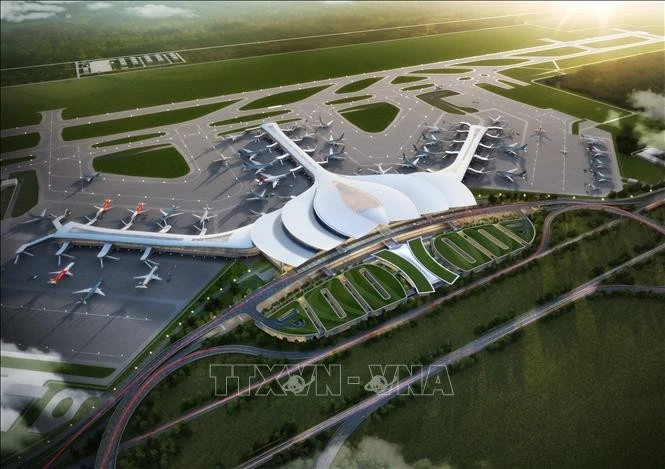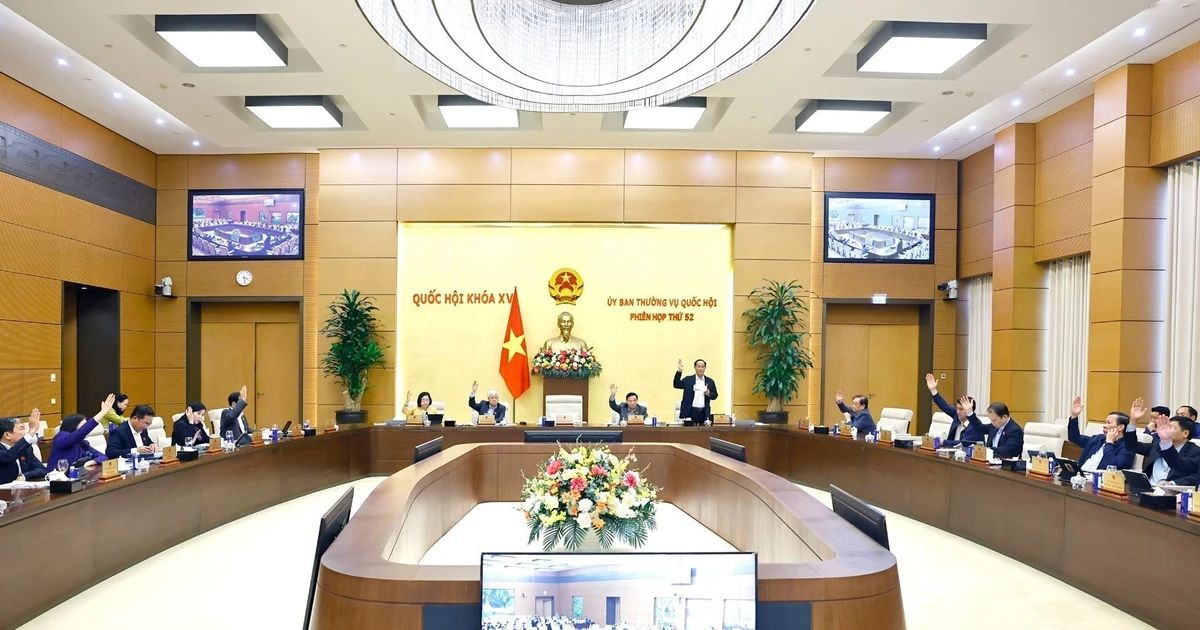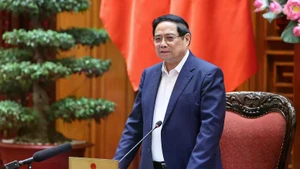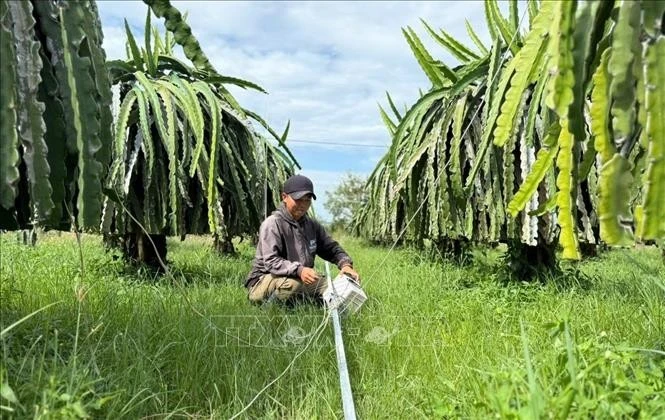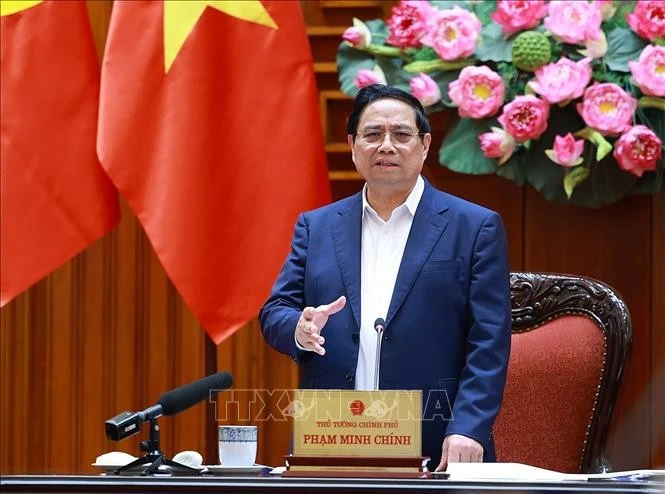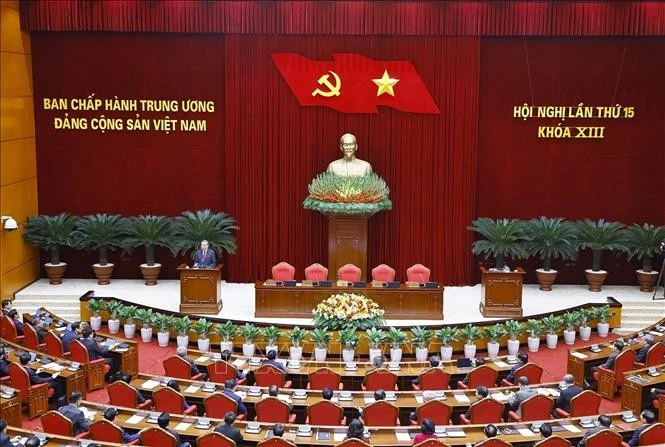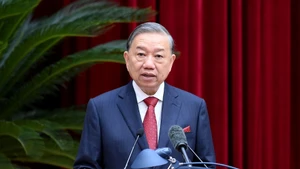This approach clearly reflects the Party’s comprehensive leadership role, ensuring that human resources are developed in the right direction and in line with the country’s development requirements in each period.
Entering a new stage of development, as the country advances towards achieving the two centenary goals, the urgent requirement is to build a contingent of high-quality human resources capable of meeting the demands of rapid and sustainable national development.
Strategic vision
Since the 6th National Party Congress, successive Party congresses have emphasised the need to promote the human factor, linking human resources development with scientific and technological progress and the requirements of international integration.
The 13th National Party Congress clearly identified that developing human resources, especially high-quality human resources, to meet the requirements of the Fourth Industrial Revolution and international integration is one of the three strategic breakthroughs, along with improving institutions and developing synchronous infrastructure. The draft documents to be submitted to the 14th National Party Congress define the development of high-quality human resources and the fostering of talent as one of the strategic breakthroughs.
With this theoretical vision and foundation of thought, many important resolutions have been issued, forming a coherent chain of policies that affirm the Party’s consistent and long-term leadership over human development strategy. In practice, the Party’s strategic planning mindset has been strongly institutionalised from the central to the local level, from overall planning to specific actions. Many provincial and municipal Party committees have issued action programmes and specialised resolutions, considering this as a key breakthrough to promote rapid and sustainable development.
In 2016, the Lai Chau Provincial Party Committee issued Resolution No. 06-NQ/TU on improving human resources quality for the 2016–2020 period. Since then, the province has synchronously implemented many mechanisms and policies on training, attracting and developing high-quality human resources, and creating positive shifts in labour structure. As a result, the educational, professional, and technical levels of the workforce have increased year by year.
In Khanh Hoa, the Resolution of the 2025–2030 term of the Provincial Party Congress clearly states: in developing high-quality, highly skilled human resources — especially in scientific research, technology development, and innovation — the goal is that by 2030, there will be 12 people with high-level qualifications per 10,000 inhabitants.
According to Nghiem Xuan Thanh, Member of the Party Central Committee and Secretary of the Khanh Hoa Provincial Party Committee, recognising that people are the centre and the decisive driving force for sustainable development, and with the province’s four economic pillars being industry, energy, tourism–services, and construction–urban development, the prerequisite requirement for Khanh Hoa is to focus on high-quality human resources training. The Khanh Hoa Provincial Party Committee also affirmed the need to renew thinking and approaches, ensuring that education development is directed towards improving training quality and linking training with actual labour market needs. This is a strategic direction for building qualified human resources that meet the province’s economic development needs in the coming period.
Many commune and ward Party committees have clearly demonstrated their capacity for orientation and implementation through specific programmes and plans. The Party Committee of Phuoc Dinh Commune (Khanh Hoa) identifies training, attracting, and effectively using human resources as one of the key tasks of the 2025–2030 term.
According to Truong Xuan Vy, Secretary of the Party Committee and Chairman of the People’s Council of Phuoc Dinh Commune, with the aim to make Phuoc Dinh a key economic development area of the province, the commune’s Party Committee has directed the determined and synchronous implementation of tasks and solutions, with priority given to training, attracting, and effectively using human resources to meet development requirements in the new period. Recognising that the contingent of cadres and Party members is itself a high-quality human resources pool bearing the responsibility of local socio-economic development, the commune’s Party Committee focuses on planning, training, and fostering cadres and Party members with the qualities, competence, and qualifications required for their tasks.
Developing human resources associated with “digital capacity”
The Party’s strategic planning role is reflected in the consistency of its vision, the systematic nature of its policies and the decisive actions of Party committees in localities and units.
According to Nguyen Manh Hung, Deputy Director of the Department of Social Affairs under the Party Central Committee’s Commission for Policy and Strategy, the lesson about strategic vision going one step ahead demonstrates the leadership role of the Party and the state in human resources development orientation, while posing urgent requirements for forecasting, preparation, and adaptation to new development trends.
In the context of comprehensive digital transformation, policies regarding high-quality human resources now place demands on “digital capacity” and “creative thinking” as essential criteria, especially for cadres and Party members — the pioneers in renewal and innovation. Central Party agencies are the strategic advisory bodies of the Party in formulating major guidelines and policies. With many new and difficult tasks, the requirements for advisory cadres have also increased and expanded.
According to Vu Trong Lam, Director–Editor-in-Chief of the Su That (Truth) National Political Publishing House, building an advisory cadre contingent associated with digital transformation is a strategic requirement for the Party’s leadership in the new period. Alongside traditional qualities, new criteria must be added to match digital transformation trends, such as proficiency in information technology, the ability to exploit and process big data, and skills in using artificial intelligence to support forecasting and policy formulation.
At grassroots Party organisations, digital capacity is an essential requirement for cadres and Party members to meet the many new tasks and responsibilities. The Hai An Ward Party Committee (Hai Phong City) has 105 Party organisations with more than 5,500 Party members. The committee identifies that after restructuring and streamlining the apparatus, the leadership and administration of Party committees and local government at two levels must strongly apply information technology and digital transformation.
According to Pham Thi Chuyen, Standing Deputy Secretary of the Hai An Ward Party Committee, one of the key tasks and solutions for the 2025–2030 term is enhancing self-training, professional development, and digital capacity building among cadres, civil servants, and public employees. In this, the contingent of cadres and Party members must take the lead, setting an example in improving skills and learning new competencies, thereby promoting substantive change in work performance and contributing to building a strong and high-quality human resources contingent.
Developing high-quality human resources associated with digital transformation is both a socio-economic development objective and a prerequisite for the country to progress firmly on the path of modernisation, integration, and development. It is also a measure of the leadership capacity, combat strength, and pioneering spirit of Party committees and Party organisations at all levels, and of each cadre and Party member in the new era.

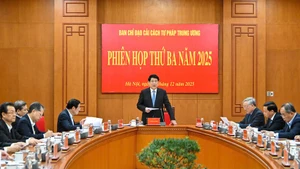

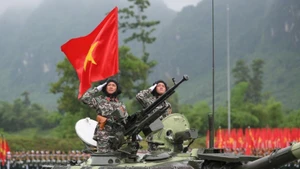
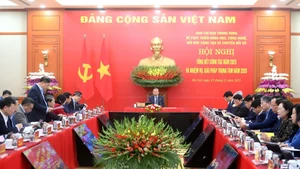
![[In Pictures] Party General Secretary To Lam chairs conference of Central Steering Committee for the Development of Science, Technology, Innovation and Digital Transformation](https://en-cdn.nhandan.vn/images/5992a12dd6e78b9bfb434962ff18307331f51c4c3a3e5fcfcd42f0234766d9c4472e3c23eec9b1fd1b48745c8d3f1352344b9404599dcafdc84ae4ddd5452acc/251225-tbt-3.jpg.webp)
